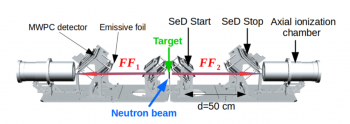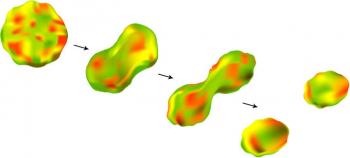This experiment aims to provide accurate data on actinide neutron-induced fission fragment characteristics (mass distributions, kinetic energy) and neutron multiplicities in the energy range between 500 keV and 20 MeV. Those data are of particular interest for the nuclear community in view of the development of the fast reactor technology. For thermal neutron energies, a lot of fission reaction data are available. Some of them are still partial or suffer from insufficient accuracy. In the fast neutron energy domain, only very few data are available.
For fission mechanism studies, the energy dependence of fragment mass and the fragment kinetic energy as well as neutron multiplicities are important key data. Therefore, the new accurate fission data will help to improve predictions, in particular, for nuclei difficult to access experimentally. Excitation energy sharing, even-odd effects, deformation energy and fission modes are some of the aspects that can be studied with FALSTAFF.
The fission fragment mass distributions will be measured using residual energy and time-of flight (TOF) technique. The FALSTAFF (Four Arm cLover for the Study of Actinide Fission Fragment) spectrometer will allow the simultaneous measurement of the complementary fragments velocity and energy. The necessary timing resolution will be obtained by using secondary electron detectors for the TOF measurement, from which ?t=100 ps may be expected. Ionization chambers with axial field will be placed behind the stop detectors to measure the fragment residual energies. The combined measurements of velocity and energy provide information on the mass of the fragments before and after the neutron evaporation. Neutron multiplicity as a function of the mass distribution may then be deduced directly from the difference of pre- and post-neutron masses. From the total kinetic energy (TKE) of the fragments the total excitation energy (TXE) will also be determined.
The analysis of an experiment (IPN Orsay, Sept. 2017) dedicated to the calibration of the ionisation chamber is on progress. The first arm of FALSTAFF is beeing tested at Saclay. In 2018, an experiment with a thermal neutron beam will be performed at the Orphee reactor with a 235U target to validate the experimental setup with beam. It is foreseen to build the second arm of FALSTAFF in 2019.





